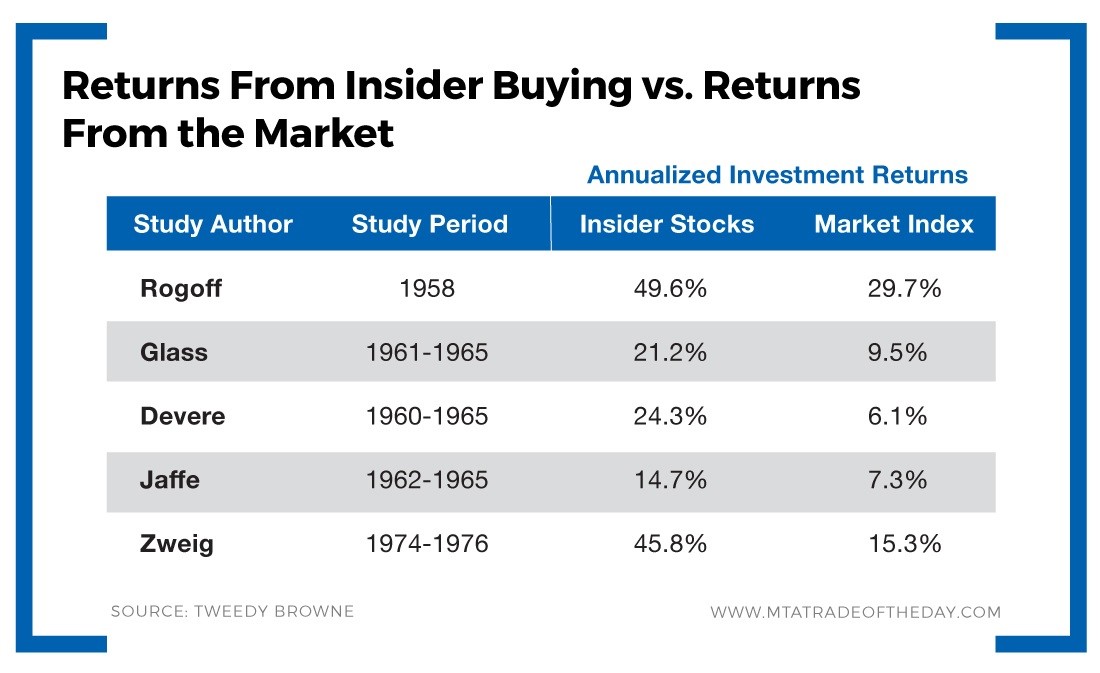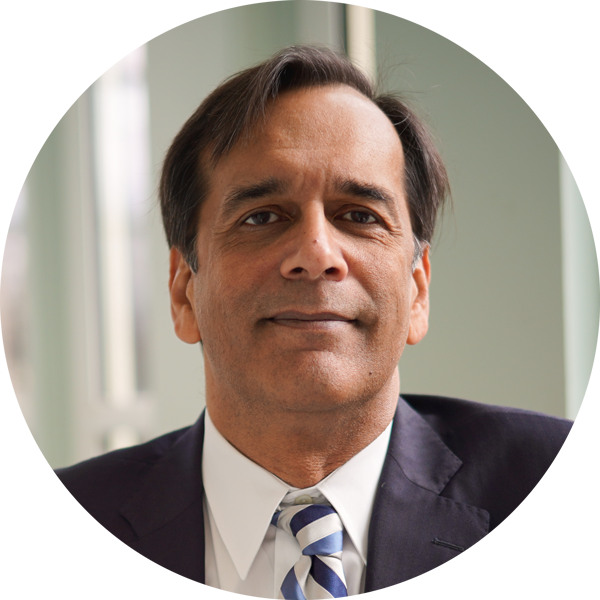Special Access: What We’re Buying in The War Room Tomorrow
One of the most accurate predictors of how a stock will do in the future is insider buying.
But there’s a catch…
There must be a pattern.
This pattern is called “cluster buying.” It’s when three or more insiders buy at varying prices, lower and higher, on the open market.
But there’s more. This pattern also requires that one or two of the insiders be officers or lower. Directors often buy as part of a program, and major shareholders who own more than 10% of the outstanding shares buy for varying reasons.
However, when an insider like the vice president of marketing or the legal counsel buys shares, you should pay attention.
There was a study done by a Tweedy Browne employee that encompassed insider buying. Without going into detail about all the aspects of the study, I’ll just leave you with this chart…

As you can see, the insiders walked away with the trophy!
That’s why we have had much success in The War Room with both our stock and options picks. Picks like AbbVie, which members bought with the insiders in the $60s… and Gannett, which some members just cashed in on for triple-digit gains! And companies that are still in our portfolio.
I’m about to add another company to The War Room portfolio tomorrow. It’s a microcap that just confirmed cluster buying, and I’m doing my research on it right now.
It’s been affected by the COVID-19 crisis, but it’s coming out of it nicely with month-over-month sales increasing dramatically. And in its latest filing, it reported sales in the last week of May were at 61% of where they were the same period last year – up from the 20% level, where the pandemic forced it to curtail service.
Insiders have been buying shares recently. Five officers and four directors have picked up shares so far this month.
Action Plan: Even though insiders buy, they are not allowed to sell for six months, so sometimes it takes a few months to play out.
But not always.
In the case of Gannett and AbbVie, it was a matter of days! And since this is a microcap, we must use a very specific strategy to allow members to get in at the best prices and not overpay. Ultimately, the goal is to pay less than the insiders!
Join me in The War Room right now so that you can get a crack at this company tomorrow!
About Karim Rahemtulla
Karim began his trading career early… very early. While attending boarding school in England, he recognized the value of the homemade snacks his mom sent him every semester and sold them for a profit to his fellow classmates, who were trying to avoid the horrendous British food they were served.
He then graduated to stocks and options, becoming one of the youngest chief financial officers of a brokerage and trading firm that cleared through Bear Stearns in the late 1980s. There, he learned trading skills from veterans of the business. They had already made their mistakes, and he recognized the value of the strategies they were using late in their careers.
As co-founder and chief options strategist for the groundbreaking publication Wall Street Daily, Karim turned to long-term equity anticipation securities (LEAPS) and put-selling strategies to help members capture gains. After that, he honed his strategies for readers of Automatic Trading Millionaire, where he didn’t record a single realized loss on 37 recommendations over an 18-month period.
While even he admits that record is not the norm, it showcases the effectiveness of a sound trading strategy.
His focus is on “smart” trading. Using volatility and proprietary probability modeling as his guideposts, he makes investments where risk and reward are defined ahead of time.
Today, Karim is all about lowering risk while enhancing returns using strategies such as LEAPS trading, spread trading, put selling and, of course, small cap investing. His background as the head of The Supper Club gives him unique insight into low-market-cap companies, and he brings that experience into the daily chats of The War Room.
Karim has more than 30 years of experience in options trading and international markets, and he is the author of the bestselling book Where in the World Should I Invest?






